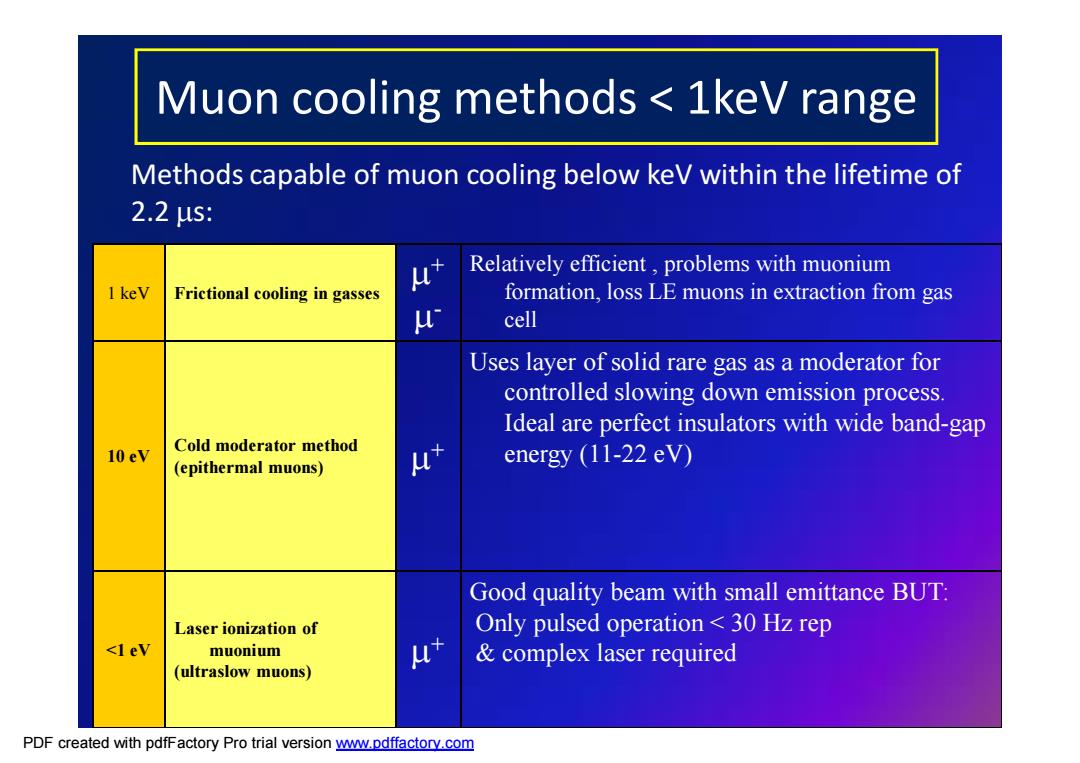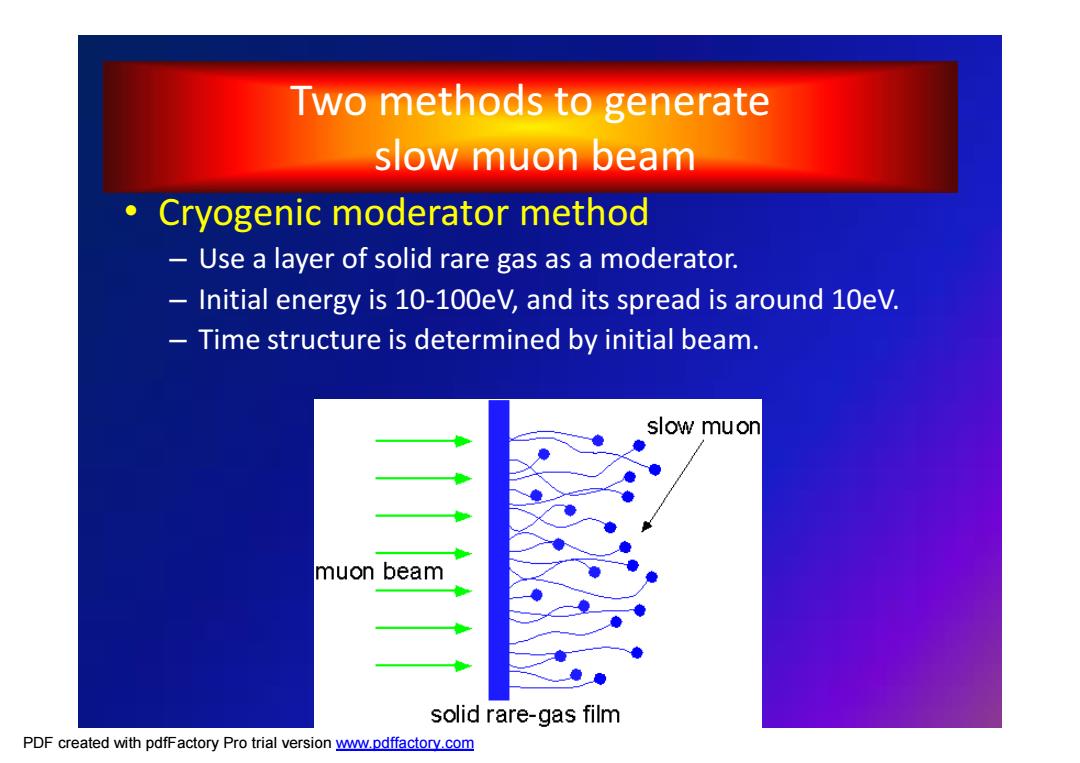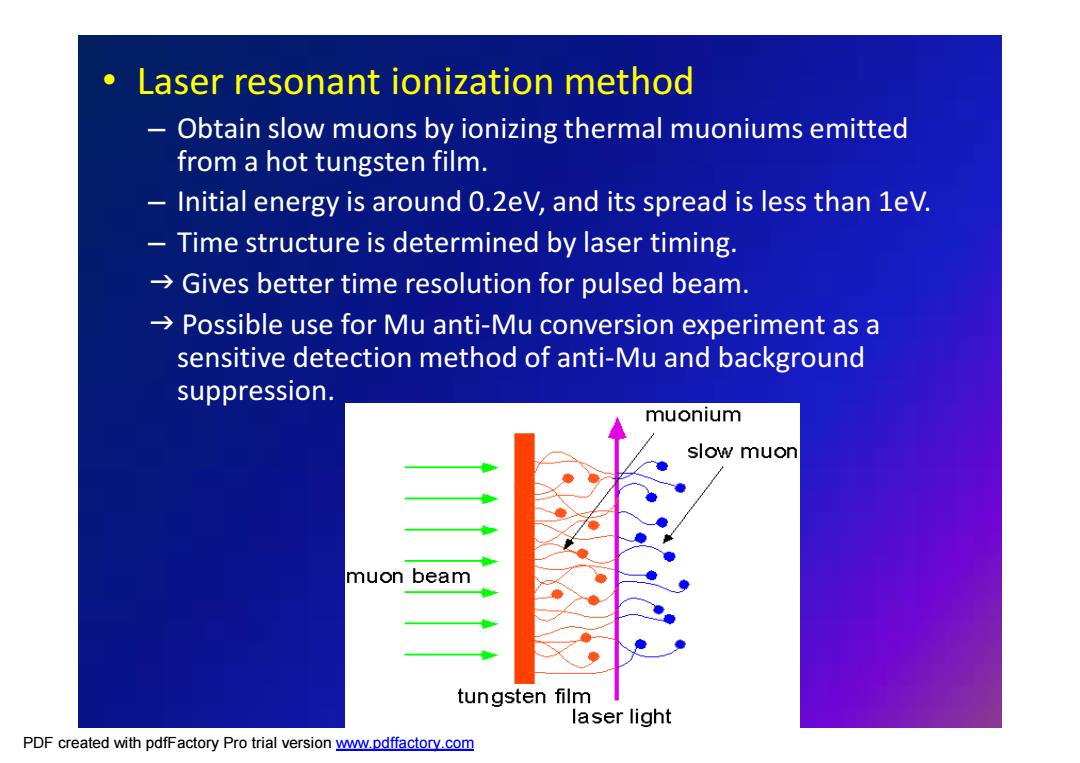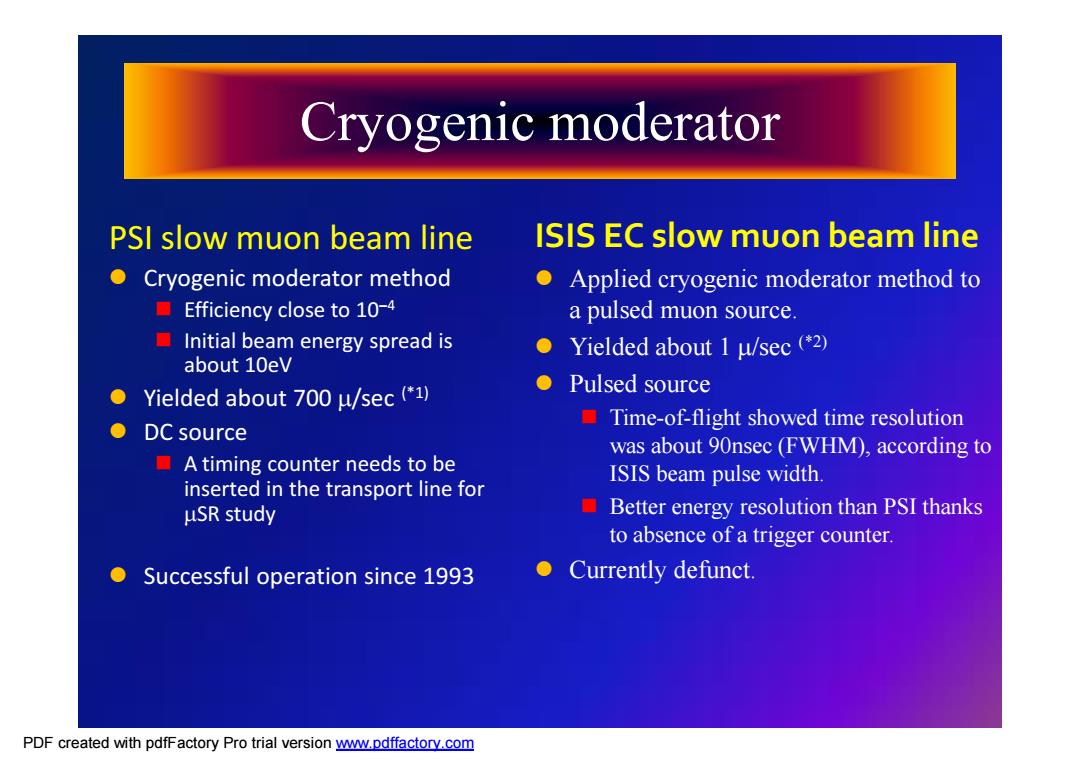
Muon cooling methods 1keV range Methods capable of muon cooling below keV within the lifetime of 2.2us: Relatively efficient,problems with muonium 1keV Frictional cooling in gasses formation,loss LE muons in extraction from gas cell Uses layer of solid rare gas as a moderator for controlled slowing down emission process. Ideal are perfect insulators with wide band-gap 10eV Cold moderator method (epithermal muons) energy (11-22 eV) Good quality beam with small emittance BUT: Laser ionization of Only pulsed operation<30 Hz rep <leV muonium complex laser required (ultraslow muons)
Muon cooling methods < 1keV range Methods capable of muon cooling below keV within the lifetime of 2.2 ms: 1 keV Frictional cooling in gasses m + m - Relatively efficient , problems with muonium formation, loss LE muons in extraction from gas cell 10 eV Cold moderator method (epithermal muons) m + Uses layer of solid rare gas as a moderator for controlled slowing down emission process. Ideal are perfect insulators with wide band-gap energy (11-22 eV) <1 eV Laser ionization of muonium (ultraslow muons) m + Good quality beam with small emittance BUT: Only pulsed operation < 30 Hz rep & complex laser required

Two methods to generate slow muon beam Cryogenic moderator method Use a layer of solid rare gas as a moderator. Initial energy is 10-100eV,and its spread is around 10eV. Time structure is determined by initial beam. slow muon muon beam solid rare-gas film
Two methods to generate slow muon beam • Cryogenic moderator method – Use a layer of solid rare gas as a moderator. – Initial energy is 10-100eV, and its spread is around 10eV. – Time structure is determined by initial beam

● Laser resonant ionization method Obtain slow muons by ionizing thermal muoniums emitted from a hot tungsten film. 一 Initial energy is around 0.2eV,and its spread is less than 1eV. Time structure is determined by laser timing. Gives better time resolution for pulsed beam. Possible use for Mu anti-Mu conversion experiment as a sensitive detection method of anti-Mu and background suppression. muonium slow muon muon beam tungsten film laser light
• Laser resonant ionization method – Obtain slow muons by ionizing thermal muoniums emitted from a hot tungsten film. – Initial energy is around 0.2eV, and its spread is less than 1eV. – Time structure is determined by laser timing. g Gives better time resolution for pulsed beam. g Possible use for Mu anti-Mu conversion experiment as a sensitive detection method of anti-Mu and background suppression

Cryogenic moderator PSI slow muon beam line ISIS EC slow muon beam line oCryogenic moderator method Applied cryogenic moderator method to Efficiency close to 10-4 a pulsed muon source. Initial beam energy spread is ● Yielded about 1 u/sec (*2) about 10eV ●Pulsed source ● Yielded about 700 u/sec (1) ● DC source Time-of-flight showed time resolution was about 90nsec(FWHM),according to A timing counter needs to be ISIS beam pulse width. inserted in the transport line for uSR study Better energy resolution than PSI thanks to absence of a trigger counter. Successful operation since 1993 ●Currently defunct
Cryogenic moderator PSI slow muon beam line l Cryogenic moderator method n Efficiency close to 10-4 n Initial beam energy spread is about 10eV l Yielded about 700 m/sec (*1) l DC source n A timing counter needs to be inserted in the transport line for mSR study l Successful operation since 1993 ISIS EC slow muon beam line l Applied cryogenic moderator method to a pulsed muon source. l Yielded about 1 m/sec (*2) l Pulsed source n Time-of-flight showed time resolution was about 90nsec (FWHM), according to ISIS beam pulse width. n Better energy resolution than PSI thanks to absence of a trigger counter. l Currently defunct

PSI slow muon beam line Surface u beam E~4 Mev MCP1 ■D Mirror Spin Einzel lens Einzel lens (LN:cooled) Moderator Trigger Detector (C-foil) ☒ ☒ Einzel lens Low Energy u beam (LN:cooled) 0-30 kev Gate Valye Conical Helmholtz Coils lens Sample or MCP Sample Cryostat
PSI slow muon beam line